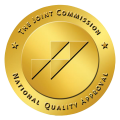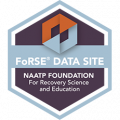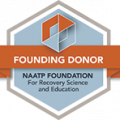Cocaine is a derivative of the coca leaf that is then processed into cocaine hydrochloride, which is the traditional powdered form. In this form, the drug is either ingested, snorted or injected and has limited medical uses as a local anesthetic.
Crack cocaine is a more purified version. To make crack, the cocaine hydrochloride is mixed with either ammonia or sodium bicarbonate (baking soda) and water to remove the hydrochloride, leaving a dangerously pure base. This form is commonly smoked. It is too pure to be inhaled.
Pharmacologically, there is no difference between cocaine hydrochloride and cocaine in the form of crack. The real differences lie in how the two affect the user.
It takes an estimated two to five minutes for the user to feel the effects of the drug upon inhalation of it. These effects last an average of 15 to 30 minutes and include:
- Alertness
- Euphoria
- Decreased appetite
- Increased heart rate
- Cravings for more of the drug
When the drug is introduced intravenously, these same effects will take effect within 15 to 30 minutes, but those effects will last an average of 20 minutes to an hour before the user begins to crave more of the drug.
With crack, the effects of the drug are felt immediately. Upon smoking crack, the user will feel those effects for approximately 15 minutes before the cravings for more begin to build. While the effects are somewhat similar, crack cocaine is considered the more intense high. Because of the increase in intensity, the user feels the need to use again frequently in an effort to once again experience that first high.
When the effects of the drug subside, the user is left feeling like they have crashed. These effects include:
- Intense fatigue
- Depressed
- Agitated
- Anxious
- Craving more
- Physical pain in their muscles
Crack Cocaine Defined
The intensity of the high noted above can lead to bingeing behavior where the user will consume a large quantity of the drug in a short period of time. This is true for both powder and crack forms of cocaine, but it is more dangerous to the crack user.
Crack cocaine refers to the purity of this form of the drug, which leads to the more intensive high. When the drug is binged through smoking crack, the user can approach dangerous overdose symptoms.
When the hydrochloride is removed from the powder form of the drug, it leaves a base. The hydrochloride can be removed through an intense process using ether, and this process is known as “freebasing.” Crack is diluted with sodium bicarbonate and water, which makes it less expensive and is where the name “crack” comes from: the crackling noise it makes when it is being melted.

Socioeconomic Differences
When crack first appeared on the streets in the 1980s, many people in a lower income bracket viewed it as a way to climb out of their socioeconomic strata. An investment in cocaine hydrochloride could result in phenomenal profits when sold in the form of crack.
Because of crack’s addictive nature, this unfortunately translated into vastly different sentencing guidelines in the criminal court system. The penalties for possession and selling crack becoming significantly greater than the penalties for possessing and selling cocaine. When sentencing guidelines were first released during the 1980s, the sentence for possession of 500 grams of cocaine hydrochloride was the same as possession of 5 grams of crack.
Many of the users and dealers involved in the crack trade were people of color, which translated into higher rates of Black convictions for possession of the drug. The mandatory minimum sentencing guidelines sent many to prison for decades. It also raised the ratio of Black prisoners to white prisoners substantially, and nonviolent Black offenders served the same amount of time as violent white offenders.
While the sentencing differences are still substantial, the mandatory minimums have changed, and many prisoners are being given a second chance at life outside prison. Where there was originally a mandatory five-year sentence for first-time offenders, the Fair Sentencing Act of 2010 retroactively began to treat drug offenders more equally. The original ratio of 100:1 was changed to 18:1.
Even with the threat of prison, both cocaine and crack are still used and abused by people of all social classes. It’s important to help cocaine and crack users get treatment for their drug use to avoid legal repercussions like prison sentences.
Crack and Cocaine Addiction
- A need for increasing quantities of the drug to get high
- The inability to stop using the drug
- Symptoms of withdrawal when the drug is unavailable
- The desire to participate in binge sessions where a large quantity of the drug is used in a short period of time
- Significant irritability and anxiety when the user is unable to procure the drug
- The inability to keep relationships intact or maintain employment
- The tendency to spend all their money on the drug
- The inability to quit using the drug even when there are health issues
- Frequent episodes of hallucinations and psychotic episodes while high
Long-Term Effects of Cocaine Use on the Body
Aside from the symptoms of a crash or withdrawals, cocaine can significantly affect the health of the user both short-term and long-term. When cocaine is used regularly, the long-term effects on a person’s health can escalate and ultimately include:
• Chest pain
• Irregular heartbeat or high blood pressure
• Insomnia
• Headaches
• Crippling fatigue
• Depression
• Anxiety and paranoia
• Impaired mental function
• Abdominal pain
• Nausea
• Weight loss
• Eating disorders
• Aggressive and violent behavior
• Seizures
• Sensitivity to light and sound
• Sexual dysfunction
• Hallucinations
• Psychotic episodes
• Heart attack
• Stroke
Treatment for Cocaine Addiction
Outpatient programs, which are common for cocaine addiction, include intensive treatment while allowing the user to live at home. The drawbacks of this treatment are that, occasionally, the home environment is not conducive to recovery. Many times, the surroundings that a person lives in led them to misuse the drug in the first place. Still, many people do find success in outpatient programs, especially those who have a loving support system that they can fall back on and family, professional or social obligations that will keep them busy and committed to sobriety.
Residential treatment programs can last anywhere from 28 days to several months. One of the primary benefits of residential treatment is that the user is in a supervised environment and is privy to intensive treatment that delves into the real reason they began using crack in the first place. Inpatient treatment also includes supervised medical detoxification, which is helpful considering the long-term effects of the drug and the extent of withdrawal symptoms. Since some effects can appear long after the use of the drug has stopped, medial observation for a time can be important.
Whether outpatient or residential, treatment for cocaine addiction routinely includes behavior modification therapy, which seeks to teach the user to replace the behaviors that formerly led them to use cocaine or crack with healthier alternatives. These can include exercise, meditation, nutrition, art and other healthy pastimes.
Once an individual has completed their treatment program of choice, they may find a sober living environment to be a good alternative to going home to a place where their addiction was rampant. Many people recovering from a substance use disorder find living at a sober facility to be helpful because there’s a built-in support system, and it’s a good way to replace a toxic social circle with a healthy one.
First City Recovery Center
Our staff also recognizes the importance of keeping the entire family involved in the treatment and recovery process. When someone is in recovery, they need to have a strong, stable support system surrounding them. Involving and educating the family on how best to provide support conducive to continued sobriety is an important part of our program.
First City offers outpatient treatment, partial hospitalization treatment and inpatient programs for the initial phase of the recovery process. Following discharge from these programs, our clients may choose to move into a transitional living center to continue to learn how to live without their drug of choice among peers with the same focus.
Our Visible Recovery Program is a support group made up of those continuing their sober journey following treatment within First City programs. The program includes several group activities each month that help our graduates stay successfully on the road to recovery.
If you are concerned about the crack addiction of a loved one who might be in denial, you can speak with one of our experienced intervention professionals to learn the next steps that you can take to get your loved one well. If you are afflicted with a substance use disorder yourself and are ready to enter recovery, contact us today for more information about overcoming addiction.

















